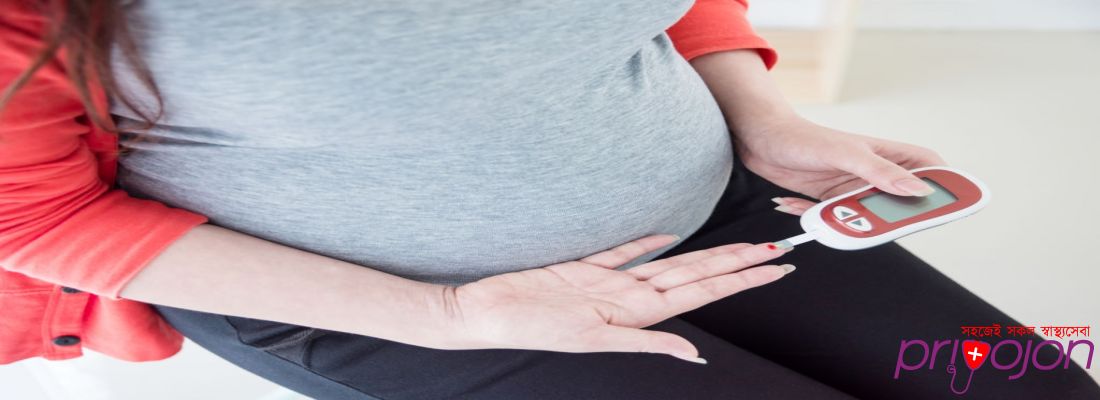Shared on 27-05-2020
Using an At-Home Fetal Doppler
Using an At-Home Fetal Doppler

The ability to hear the joyous sound of your baby’s heartbeat anytime you choose is truly a technological miracle.
While medical professionals in obstetrics have long used fetal dopplers, only recently have these become available for independent, at-home use. Known as “commercial baby heart monitors,” at-home fetal dopplers are becoming increasingly popular because they are both exciting and reassuring for expecting parents.
Getting Started
So, you’ve just bought your first fetal doppler. The ripped pieces of the packaging are still sitting on the table, and the smell of new plastic mixes with the excitement in the air. It’s time to listen to your baby’s heartbeat…
But wait, how do you use this thing?
While using a fetal doppler will soon be second nature, there are a few steps to understand before you become a heart monitoring expert. Let’s start with what you’ll need—the materials—then discuss proper techniques, and finally, briefly mention the common mistakes to avoid.
Gathering Your FD Materials | What You’ll Need to Get Started
In addition to the doppler itself, you’ll need to have a few supplemental items by your side to fully connect with your baby. Listed below are all the things you’ll surely need:
- Ultrasound gel – While it sounds like medical jargon, ultrasound gel is just a mix of water and a simple solvent known as propylene glycol. This cold goop serves a critical role in the heart monitoring process. It is used as a lubricant and helps to seal the bond between the device and womb by eliminating extra air and better conducting sound waves. Additionally, it reduces the amount of static output, making the precise detection of a heartbeat easier.
- Batteries – Most fetal dopplers run on batteries. Different devices require different kinds of batteries, so double-check which type is required. Finding an all-inclusive fetal doppler package will be handy here, as they already come with the correct battery and are ready to use immediately.
- A comfortable place to recline – For best results with an at-home doppler, it is recommended that you use it laying down flat. Finding the heartbeat can sometimes take a while, so you want to be comfortable during the process. Kick back on your couch, bed, reclining chair, or floor—whatever suits your needs and allows you to relax.
- Headphones or speaker – Whether you’re experiencing this magical moment alone or sharing it with loved ones, be sure to have your preferred listening device plugged in and at the ready.
- Patience – Hearing your baby’s heartbeat for the first time is truly a once in a lifetime moment. Because of this, mothers and fathers alike are eager to make contact with their little ones. However, letting this excitement turn into impatience might cause undue anxiety should you encounter any number of normal Remember that this process takes time; remaining calm will improve your overall experience.
Fetal Doppler 101: How to Use Your Fetal Doppler
Class is in session! Welcome to Fetal Doppler 101. Once you have all the necessary materials and a positive mentality, you are ready to start monitoring your baby’s heart! Embarking on this journey can be both exciting and nerve-wracking.
These step-by-step instructions will help make your experience as stress-free as possible:
- Get into a reclining position, laying down on your backside
- Turn on your fetal doppler
- Determine what listening option you will be using (i.e., speaker or headphones) and adjust the volume accordingly
- Expose your stomach; you may need to lift your shirt and lower your pants
- Apply ultrasound gel to the lower abdomen region
- Place the device on top of the gel and slowly start to move it from the lower abdomen upwards (more tips on placement below)
- To locate your baby, continue to adjust the position of your device, changing both your angle of approach and covering different areas (more tips on movement below)
- When you are finished, clean the device and your tummy by wiping off the gel with a dry cloth
What to Do
The successful operation of an at-home doppler comes down to the details. Little things can make a big difference when finding your baby’s heartbeat. Here are some essential pointers to heed:
- Placement – Depending on how many weeks along you are, your baby might be higher up. However, regardless of trimester, it’s recommended that you start at the lower to middle abdomen region and work your way up. Begin below your belly button around the pubic bone.
- Movement – Movement should be slow and gradual. If you’re moving too much or too fast, you risk missing your baby. Finding the sweet spot can be as much about getting the correct angle as it is about the right placement. Rather than sweeping side to side, try a lighter rocking motion. Hover over the same area for a while, tilting and angling the device before sliding it elsewhere.
- Gel application – Gel helps with the conduction of sound, so it’s okay to use it liberally. Be sure to cover the entire surface area of where you want to maneuver the doppler. The best way to apply gel is to squeeze a generous amount directly on the skin and use the device to spread as you go. This is as opposed to using your hands and smearing it on like a cream—which can create air bubbles and affect the result.
- Practice first – Trying out the doppler on yourself first can help you get the hang of things. A practice run will allow you to get a feel for how to move and what to listen for. Just apply a little gel to your chest and follow the same instructions to find your heartbeat before you look for your baby’s.
What Not to Do
There are also a few common doppler pitfalls to steer clear of. By avoiding these frequent mistakes, you’ll have a better chance of hearing the extraordinary sound that is your child’s heartbeat:
- DON’T press too hard – Yes, one of the most compelling benefits of the doppler is that it allows you to feel closer to your baby. But pushing with all your might doesn’t accomplish that. Be gentle! Pressing too hard actually makes detection harder.
- DON’T rub the gel all over – Knowing that gel improves connectivity and aids in the transmission of sound, you might be tempted to lather up. However, spreading goop all over your stomach actually won’t help. By messing around too much with the gel, you risk letting more air bubbles into the mix, which creates more static.
- DON’T try to use it standing up – Relax mom; get off your feet for a moment. During this process, you want your uterus to be in a forward position. Reclining will prop up your lower abdomen, bring your baby closer to the fetal doppler, and allow you to maneuver the doppler more easily.
Insider Tips and Tricks
There is no one-size-fits-all strategy for using a heartbeat monitor. Just like each pregnancy is a deeply personal experience, so is each use of an at-home doppler. The uniqueness of your journey is part of what makes it special, but unfortunately, it also makes it hard to guarantee what methods may or may not work for you.
However, there are a handful of tips and tricks that many at-home doppler users seem to agree on. Who knows, one or more of the following pointers may end up making your life a lot easier:
- Time of day – Some say that the earlier in the day you use the doppler, the easier finding the heartbeat is. This may be because the morning is when pregnant women are the least bloated.
- A need to pee – Having a full bladder may help elevate your uterus and push the fetus further forward and out of the pelvic cavity, making your baby’s heartbeat easier to find.
- Weight matters – Extra body tissue may impact sonography. If you are overweight, you may have to be a little extra patient.
- Ask for assistance – Especially during your first few uses, the presence of a partner can be calming. Plus, having an extra set of ears to listen for the gentle drum of the heartbeat can be helpful.
- Keep it clean – It’s important to wipe down the device to avoid the buildup of gel residue, which may impair the transmission of sound signals.
Troubleshooting Tips
If you are encountering problems finding your baby’s heartbeat, don’t panic. As the famous saying goes: keep calm and carry on. It’s okay to take a break, come back, and try again later. Though struggling to find your baby’s heartbeat can be frustrating and even scary, you don’t have to freak out. There are several reasons why you may not be able to hear a heartbeat right away.
Of course, if you are ever seriously worried about the activity or health of your baby, contact your doctor immediately.
FAQs
Previous users have paved the way, and learning from their experiences will prepare you for potential bumps in the road. Here are some frequently asked questions by at-home doppler users like you:
When can you start using an at-home doppler?
The consensus of both practitioners and parents alike is that the appropriate time to start using an at-home doppler is around 13 weeks. While some sources say it’s possible to find a heartbeat sooner, waiting an extra week or two can make the process easier.
How do you locate your baby inside you?
Your ability to successfully find your baby can depend on his or her fetal position. Your little one is constantly moving inside you and may sometimes be in a less optimal position for you to locate their heartbeat.
For example, sometimes their little head might be blocking the angle for the fetal doppler; other times, their knees are up to their chest, stifling the sound of the heartbeat.
If you don’t hear your baby’s heartbeat at first, don’t panic! Simply put the doppler away and try again later once your baby has moved into a better spot.
What exactly should you be listening for?
Ultrasound technology doesn’t only detect fetal heartbeats. It can also pick up your pulse, your stomach grumbling, your blood flowing, the baby’s hiccups and movements, static, and more. These different sounds can get confusing. Thus, practicing on your own heartbeat helps you know what you’re listening for. When it comes to distinguishing between the baby’s heartbeat and your own, pay attention to beats per minute (BPM).
- A normal adult heart rate is around 80 BPM
- A normal 12- to 16-week fetus’ heart rate is much faster, around 150 BPM.
What do you do if you can’t find the heartbeat?
Even if you’re following these directions to a tee, it is not uncommon to have some difficulty using a doppler on your own. Many mothers struggle to find their baby’s heartbeat on the first try, so don’t get discouraged. This is a learning process, and trial and error are inevitable. Don’t give up!
Best Practices from the Pros
If you’re currently an expecting mother, chances are you’ve already seen a fetal doppler in action. During routine first trimester checkups, at around 10 to 12 weeks, most healthcare providers use fetal dopplers to monitor the baby’s heartbeat. At your next appointment, be extra attentive. Get ready to watch and learn!
Nurses and doctors are pros who make using fetal dopplers look effortless. Therefore, you may want to ask your doctor to walk you through the process and carefully explain what they’re doing.
Doctor Knows Best
Keep in mind that the equipment used by medical practitioners is a bit different than handheld devices used at home. Especially in the earlier stages of pregnancy, at-home monitors are not as accurate or reliable as the high-tech medical-grade machinery used by professionals. Doctors also have the advantage of seeing what they’re doing on a monitor with 3D and 4D ultrasound equipment.
Most of all, it is important to note that at-home fetal doppler devices should never be used in place of medical examinations. While they are safe and offer many benefits during your pregnancy, they are not a substitute for the care provided by a doctor.
Sharing the Love
Using a doppler to connect with your baby is an intimate bonding experience between parent and child. Although, once you do find that precious heartbeat, you will probably want to share the wonderful sound with the whole world.
Luckily, you won’t have to invite all your friends and family over for a listening party in your living room. Many at-home dopplers have special recording features that enable you to capture the audio and send it to loved ones.
Using the Recording Feature
Dopplers with this feature have a port, often the same one as the headphone jack, which will allow you to plug in a special recording cable. The other end of this cable will need to be hooked up to a computer, smartphone, or another device.
Yes, setting up the recording is really that simple! Lastly, once the magical sound of your baby’s heartbeat is uploaded as an audio file on your computer, you can save it, replay it, and share it via email or text.
Smooth Operator
Congrats, you are now officially armed with the knowledge you need to use an at-home fetal doppler! You no longer have to hold your breath between doctor’s appointments and can listen to your baby anytime you want.
Your doppler will give you peace of mind and is an extraordinary way to foster a bond during your pregnancy. Hopefully, these tips make using an at-home fetal doppler straightforward and get you operating your device with confidence in no time.
For an FDA-cleared device with ergonomic design, all-inclusive materials, and free shipping, check out the SneakPeek At-Home Fetal Doppler. Made for moms just like you.
The ability to hear the joyous sound of your baby’s heartbeat anytime you choose is truly a technological miracle.
While medical professionals in obstetrics have long used fetal dopplers, only recently have these become available for independent, at-home use. Known as “commercial baby heart monitors,” at-home fetal dopplers are becoming increasingly popular because they are both exciting and reassuring for expecting parents.
Getting Started
So, you’ve just bought your first fetal doppler. The ripped pieces of the packaging are still sitting on the table, and the smell of new plastic mixes with the excitement in the air. It’s time to listen to your baby’s heartbeat…
But wait, how do you use this thing?
While using a fetal doppler will soon be second nature, there are a few steps to understand before you become a heart monitoring expert. Let’s start with what you’ll need—the materials—then discuss proper techniques, and finally, briefly mention the common mistakes to avoid.
Gathering Your FD Materials | What You’ll Need to Get Started
In addition to the doppler itself, you’ll need to have a few supplemental items by your side to fully connect with your baby. Listed below are all the things you’ll surely need:
- Ultrasound gel – While it sounds like medical jargon, ultrasound gel is just a mix of water and a simple solvent known as propylene glycol. This cold goop serves a critical role in the heart monitoring process. It is used as a lubricant and helps to seal the bond between the device and womb by eliminating extra air and better conducting sound waves. Additionally, it reduces the amount of static output, making the precise detection of a heartbeat easier.
- Batteries – Most fetal dopplers run on batteries. Different devices require different kinds of batteries, so double-check which type is required. Finding an all-inclusive fetal doppler package will be handy here, as they already come with the correct battery and are ready to use immediately.
- A comfortable place to recline – For best results with an at-home doppler, it is recommended that you use it laying down flat. Finding the heartbeat can sometimes take a while, so you want to be comfortable during the process. Kick back on your couch, bed, reclining chair, or floor—whatever suits your needs and allows you to relax.
- Headphones or speaker – Whether you’re experiencing this magical moment alone or sharing it with loved ones, be sure to have your preferred listening device plugged in and at the ready.
- Patience – Hearing your baby’s heartbeat for the first time is truly a once in a lifetime moment. Because of this, mothers and fathers alike are eager to make contact with their little ones. However, letting this excitement turn into impatience might cause undue anxiety should you encounter any number of normal Remember that this process takes time; remaining calm will improve your overall experience.
Fetal Doppler 101: How to Use Your Fetal Doppler
Class is in session! Welcome to Fetal Doppler 101. Once you have all the necessary materials and a positive mentality, you are ready to start monitoring your baby’s heart! Embarking on this journey can be both exciting and nerve-wracking.
These step-by-step instructions will help make your experience as stress-free as possible:
- Get into a reclining position, laying down on your backside
- Turn on your fetal doppler
- Determine what listening option you will be using (i.e., speaker or headphones) and adjust the volume accordingly
- Expose your stomach; you may need to lift your shirt and lower your pants
- Apply ultrasound gel to the lower abdomen region
- Place the device on top of the gel and slowly start to move it from the lower abdomen upwards (more tips on placement below)
- To locate your baby, continue to adjust the position of your device, changing both your angle of approach and covering different areas (more tips on movement below)
- When you are finished, clean the device and your tummy by wiping off the gel with a dry cloth
What to Do
The successful operation of an at-home doppler comes down to the details. Little things can make a big difference when finding your baby’s heartbeat. Here are some essential pointers to heed:
- Placement – Depending on how many weeks along you are, your baby might be higher up. However, regardless of trimester, it’s recommended that you start at the lower to middle abdomen region and work your way up. Begin below your belly button around the pubic bone.
- Movement – Movement should be slow and gradual. If you’re moving too much or too fast, you risk missing your baby. Finding the sweet spot can be as much about getting the correct angle as it is about the right placement. Rather than sweeping side to side, try a lighter rocking motion. Hover over the same area for a while, tilting and angling the device before sliding it elsewhere.
- Gel application – Gel helps with the conduction of sound, so it’s okay to use it liberally. Be sure to cover the entire surface area of where you want to maneuver the doppler. The best way to apply gel is to squeeze a generous amount directly on the skin and use the device to spread as you go. This is as opposed to using your hands and smearing it on like a cream—which can create air bubbles and affect the result.
- Practice first – Trying out the doppler on yourself first can help you get the hang of things. A practice run will allow you to get a feel for how to move and what to listen for. Just apply a little gel to your chest and follow the same instructions to find your heartbeat before you look for your baby’s.
What Not to Do
There are also a few common doppler pitfalls to steer clear of. By avoiding these frequent mistakes, you’ll have a better chance of hearing the extraordinary sound that is your child’s heartbeat:
- DON’T press too hard – Yes, one of the most compelling benefits of the doppler is that it allows you to feel closer to your baby. But pushing with all your might doesn’t accomplish that. Be gentle! Pressing too hard actually makes detection harder.
- DON’T rub the gel all over – Knowing that gel improves connectivity and aids in the transmission of sound, you might be tempted to lather up. However, spreading goop all over your stomach actually won’t help. By messing around too much with the gel, you risk letting more air bubbles into the mix, which creates more static.
- DON’T try to use it standing up – Relax mom; get off your feet for a moment. During this process, you want your uterus to be in a forward position. Reclining will prop up your lower abdomen, bring your baby closer to the fetal doppler, and allow you to maneuver the doppler more easily.
Insider Tips and Tricks
There is no one-size-fits-all strategy for using a heartbeat monitor. Just like each pregnancy is a deeply personal experience, so is each use of an at-home doppler. The uniqueness of your journey is part of what makes it special, but unfortunately, it also makes it hard to guarantee what methods may or may not work for you.
However, there are a handful of tips and tricks that many at-home doppler users seem to agree on. Who knows, one or more of the following pointers may end up making your life a lot easier:
- Time of day – Some say that the earlier in the day you use the doppler, the easier finding the heartbeat is. This may be because the morning is when pregnant women are the least bloated.
- A need to pee – Having a full bladder may help elevate your uterus and push the fetus further forward and out of the pelvic cavity, making your baby’s heartbeat easier to find.
- Weight matters – Extra body tissue may impact sonography. If you are overweight, you may have to be a little extra patient.
- Ask for assistance – Especially during your first few uses, the presence of a partner can be calming. Plus, having an extra set of ears to listen for the gentle drum of the heartbeat can be helpful.
- Keep it clean – It’s important to wipe down the device to avoid the buildup of gel residue, which may impair the transmission of sound signals.
Troubleshooting Tips
If you are encountering problems finding your baby’s heartbeat, don’t panic. As the famous saying goes: keep calm and carry on. It’s okay to take a break, come back, and try again later. Though struggling to find your baby’s heartbeat can be frustrating and even scary, you don’t have to freak out. There are several reasons why you may not be able to hear a heartbeat right away.
Of course, if you are ever seriously worried about the activity or health of your baby, contact your doctor immediately.
FAQs
Previous users have paved the way, and learning from their experiences will prepare you for potential bumps in the road. Here are some frequently asked questions by at-home doppler users like you:
When can you start using an at-home doppler?
The consensus of both practitioners and parents alike is that the appropriate time to start using an at-home doppler is around 13 weeks. While some sources say it’s possible to find a heartbeat sooner, waiting an extra week or two can make the process easier.
How do you locate your baby inside you?
Your ability to successfully find your baby can depend on his or her fetal position. Your little one is constantly moving inside you and may sometimes be in a less optimal position for you to locate their heartbeat.
For example, sometimes their little head might be blocking the angle for the fetal doppler; other times, their knees are up to their chest, stifling the sound of the heartbeat.
If you don’t hear your baby’s heartbeat at first, don’t panic! Simply put the doppler away and try again later once your baby has moved into a better spot.
What exactly should you be listening for?
Ultrasound technology doesn’t only detect fetal heartbeats. It can also pick up your pulse, your stomach grumbling, your blood flowing, the baby’s hiccups and movements, static, and more. These different sounds can get confusing. Thus, practicing on your own heartbeat helps you know what you’re listening for. When it comes to distinguishing between the baby’s heartbeat and your own, pay attention to beats per minute (BPM).
- A normal adult heart rate is around 80 BPM
- A normal 12- to 16-week fetus’ heart rate is much faster, around 150 BPM.
What do you do if you can’t find the heartbeat?
Even if you’re following these directions to a tee, it is not uncommon to have some difficulty using a doppler on your own. Many mothers struggle to find their baby’s heartbeat on the first try, so don’t get discouraged. This is a learning process, and trial and error are inevitable. Don’t give up!
Best Practices from the Pros
If you’re currently an expecting mother, chances are you’ve already seen a fetal doppler in action. During routine first trimester checkups, at around 10 to 12 weeks, most healthcare providers use fetal dopplers to monitor the baby’s heartbeat. At your next appointment, be extra attentive. Get ready to watch and learn!
Nurses and doctors are pros who make using fetal dopplers look effortless. Therefore, you may want to ask your doctor to walk you through the process and carefully explain what they’re doing.
Doctor Knows Best
Keep in mind that the equipment used by medical practitioners is a bit different than handheld devices used at home. Especially in the earlier stages of pregnancy, at-home monitors are not as accurate or reliable as the high-tech medical-grade machinery used by professionals. Doctors also have the advantage of seeing what they’re doing on a monitor with 3D and 4D ultrasound equipment.
Most of all, it is important to note that at-home fetal doppler devices should never be used in place of medical examinations. While they are safe and offer many benefits during your pregnancy, they are not a substitute for the care provided by a doctor.
Sharing the Love
Using a doppler to connect with your baby is an intimate bonding experience between parent and child. Although, once you do find that precious heartbeat, you will probably want to share the wonderful sound with the whole world.
Luckily, you won’t have to invite all your friends and family over for a listening party in your living room. Many at-home dopplers have special recording features that enable you to capture the audio and send it to loved ones.
Using the Recording Feature
Dopplers with this feature have a port, often the same one as the headphone jack, which will allow you to plug in a special recording cable. The other end of this cable will need to be hooked up to a computer, smartphone, or another device.
Yes, setting up the recording is really that simple! Lastly, once the magical sound of your baby’s heartbeat is uploaded as an audio file on your computer, you can save it, replay it, and share it via email or text.
Smooth Operator
Congrats, you are now officially armed with the knowledge you need to use an at-home fetal doppler! You no longer have to hold your breath between doctor’s appointments and can listen to your baby anytime you want.
Your doppler will give you peace of mind and is an extraordinary way to foster a bond during your pregnancy. Hopefully, these tips make using an at-home fetal doppler straightforward and get you operating your device with confidence in no time.
For an FDA-cleared device with ergonomic design, all-inclusive materials, and free shipping, check out the SneakPeek At-Home Fetal Doppler. Made for moms just like you.
Popular Health Tips
'Congratulations! You're pregn...
Pregnancy was once considered a time for rest when women adv...
The ability to hear the joyous sound of your baby’s heartbe...
Medically reviewed by
Dr. Rabeya Afroz Shomi
MBBS, FCPS, Dhaka Medical
3 Years of Experience
- Written by the Priyojon Editorial Team



